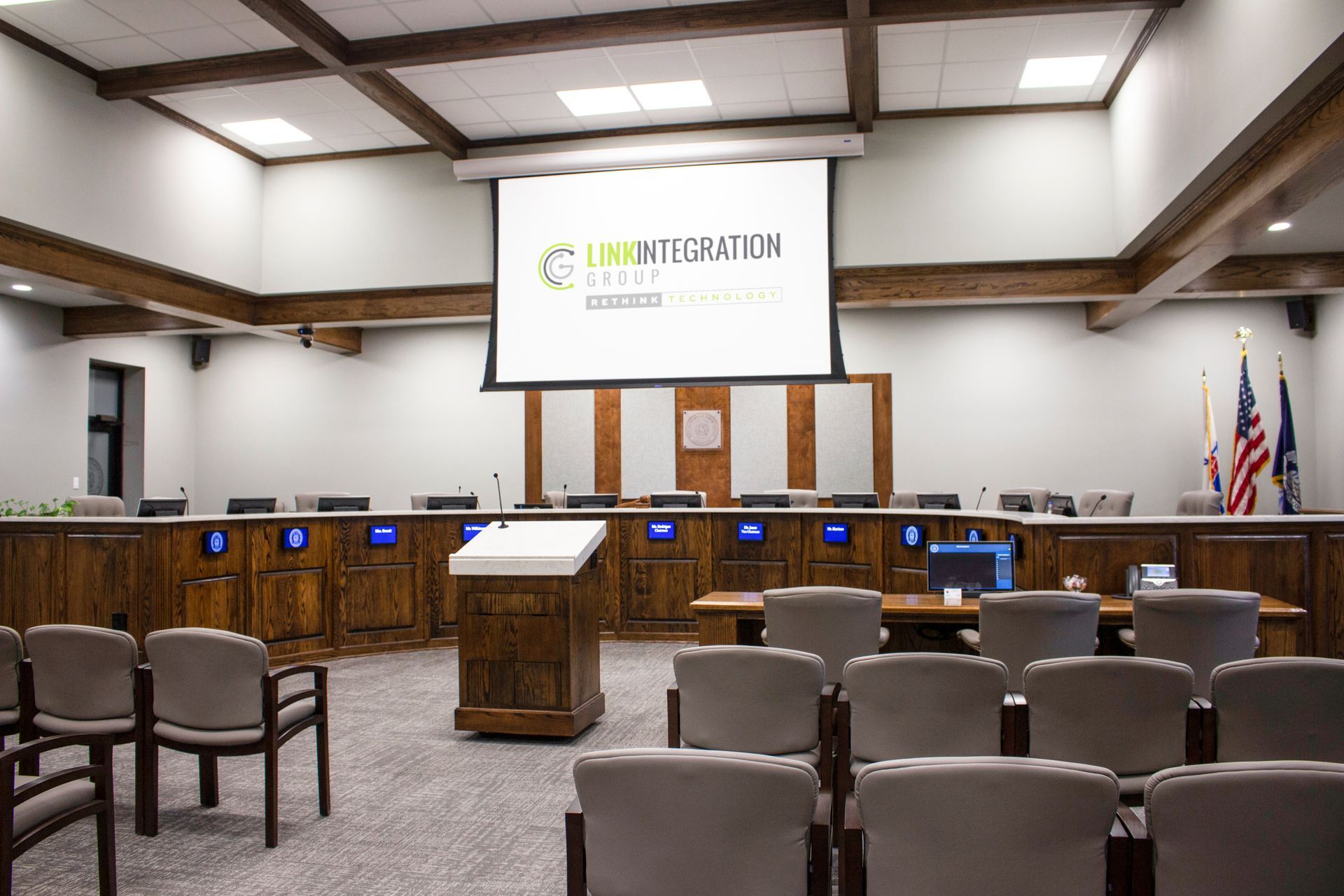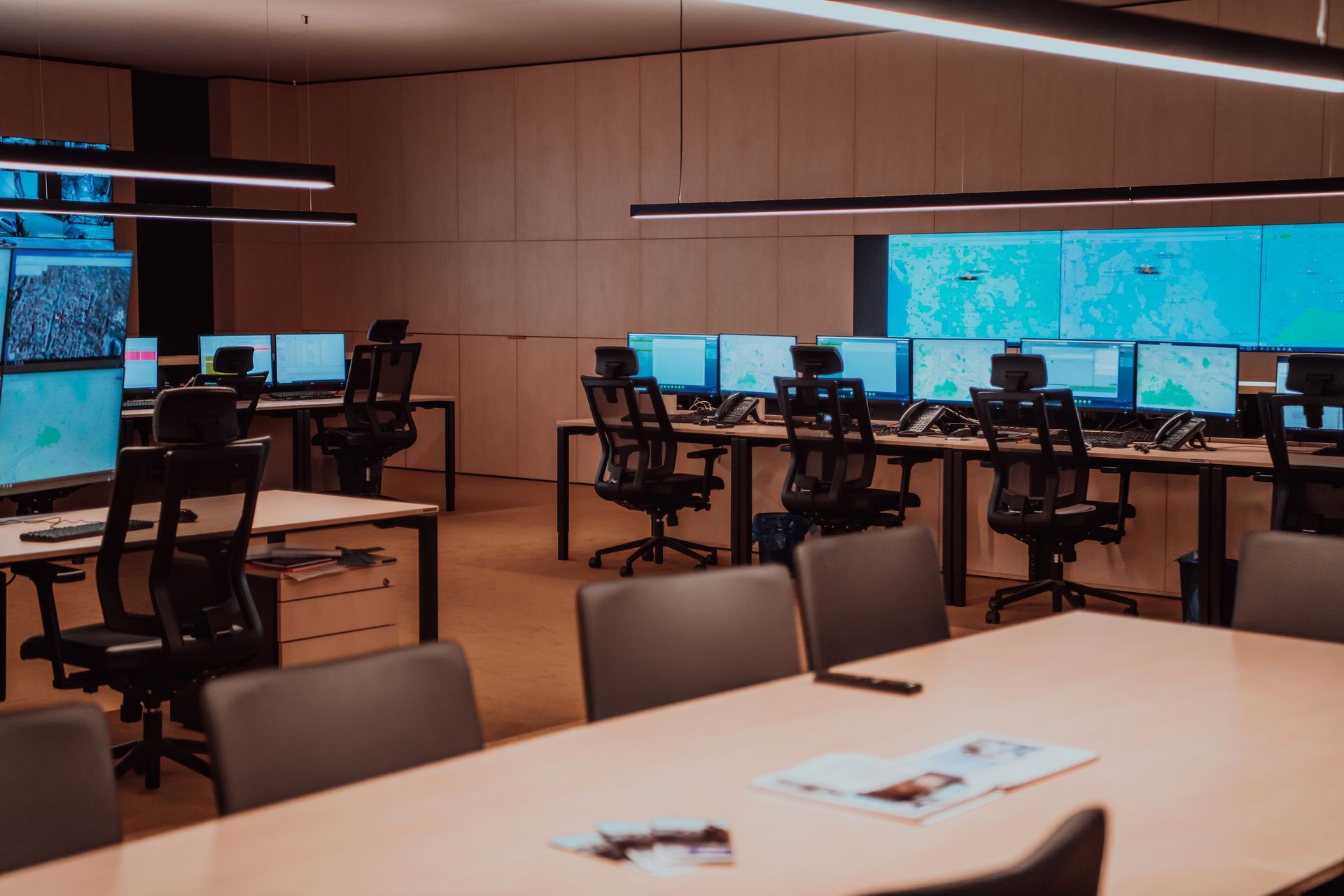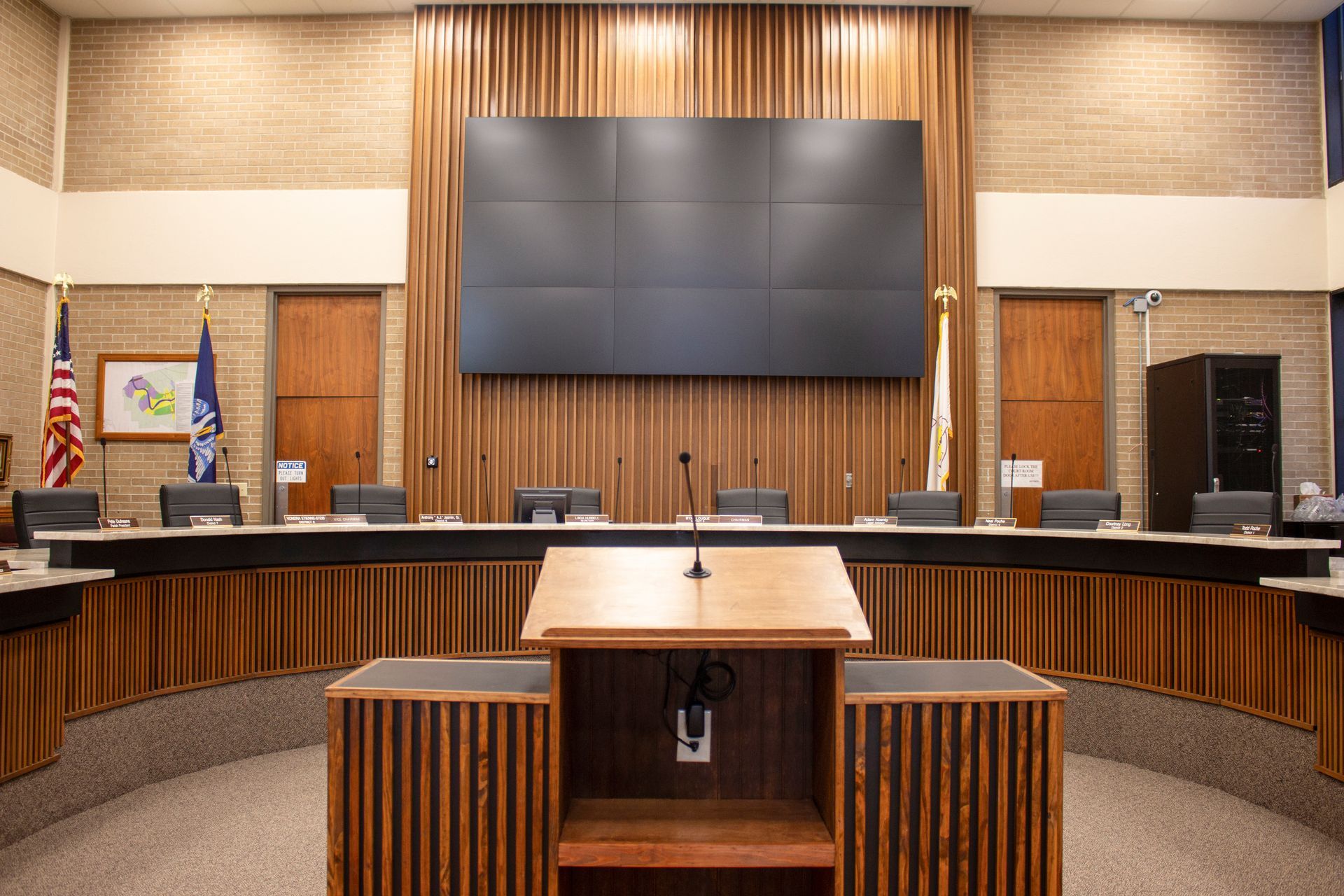Audio-Visual Challenges Facing Government Agencies In Louisiana
Brad Rojas
Audio-visual (AV) technology plays a critical role in government operations. Reliable AV systems are essential for communication, security, and public trust. Yet as technology evolves and public expectations grow, government agencies face unique challenges that make designing, implementing, and maintaining AV solutions more complex than ever.
Ensuring AV Security in a High-Risk Environment
Security is one of the most pressing issues for government AV systems. Agencies often handle highly sensitive information, whether it’s classified discussions, law enforcement coordination, or public records. When AV platforms connect directly to IT networks, they create new points of vulnerability that cybercriminals and hostile actors can exploit.
To safeguard sensitive information, agencies must take a layered approach to AV security, including:
- End-to-end encryption for video and audio transmissions to ensure communications cannot be intercepted.
- Secure network architecture with firewalls, multi-factor authentication, and role-based access controls.
- Regular vulnerability testing to identify weak points before attackers do.
- Ongoing system monitoring with alerts for suspicious activity, enabling rapid response.
- User training so staff and officials understand how to securely use AV platforms and recognize potential threats.
Building Public Trust Through Transparent AV Solutions
Public trust in government is built on openness and accountability. Citizens expect to see and hear the decisions that affect their communities, whether through live-streamed hearings, accessible public meetings, or archived video records they can revisit later. Today’s constituents also expect these platforms to be inclusive, providing ADA-compliant captions, multiple language options, and reliable access across devices.
The challenge for agencies lies in balancing these transparency demands with the responsibility to safeguard sensitive or restricted information.
Agencies can strengthen transparency by investing in:
- Closed captioning and translation services to ensure accessibility for all, including individuals with hearing impairments or non-English speakers.
- Reliable live-streaming platforms that minimize downtime, even during peak demand or unexpected surges in viewership.
- Secure data storage and archiving solutions that keep meeting records accessible to the public while protecting them from tampering or unauthorized distribution.
- User-friendly interfaces that make it easy for citizens to find, access, and share recordings without technical barriers.
Prioritizing Regulatory Compliance for Government AV Systems
Government AV systems are subject to some of the most rigorous compliance standards of any industry. From federal IT security mandates to accessibility laws like the Americans with Disabilities Act (ADA) and Section 508 of the Rehabilitation Act, agencies must ensure their technology serves every citizen fairly while protecting sensitive information.
These regulations are constantly evolving, and failing to comply can lead to legal consequences and public criticism.
To stay compliant, agencies should prioritize:
- Regular audits and documentation of AV systems to prove compliance and identify issues before they become violations.
- Accessibility features such as closed captioning, screen reader compatibility, and multilingual support to ensure equal access for all citizens.
- Staff training so employees understand how to properly use and maintain compliant AV features.
- Selecting integrators with regulatory expertise, ensuring systems are designed and installed to meet federal, state, and local standards from the start.
- Ongoing updates and system maintenance, since compliance is not a one-time achievement but a continuous responsibility.
Modernizing Outdated AV Systems with Phased Integration
Many government agencies still rely on legacy AV infrastructure that was installed years ago. While these systems may still function, they often lack the capabilities needed for today’s demands, such as high-definition video, secure remote participation, or advanced accessibility features. More importantly, outdated systems can pose serious risks by creating vulnerabilities that modern cybersecurity standards are designed to prevent.
Replacing entire systems at once may sound ideal, but it is often impractical. A more effective approach is phased integration.
By upgrading in stages, agencies can:
- Minimize downtime by modernizing one room, department, or function at a time.
- Spread out costs to make upgrades more budget-friendly and easier to justify.
- Ensure compatibility by using scalable platforms designed to work with both legacy and new systems.
- Protect long-term investments by avoiding one-off fixes that quickly become obsolete.
Reducing Long-Term Costs Through Smarter AV Planning
Budget limitations remain a constant challenge. Agencies often struggle to justify the cost of AV upgrades when balancing other priorities. However, delaying investment can lead to higher expenses down the road due to inefficiencies, downtime, or security vulnerabilities.
Agencies that take a proactive approach can demonstrate the return on investment (ROI) of reliable AV systems by highlighting benefits such as:
- Reduced downtime during critical operations, ensuring meetings, hearings, and emergency communications continue without interruption.
- Lower long-term costs through proactive monitoring and preventative maintenance that minimizes expensive repairs.
- Improved efficiency and productivity, as modern systems streamline communication and decision-making across departments.
- Enhanced compliance and security, reducing the risk of costly violations or breaches.
Overcoming AV Challenges with the Right Partner
Government AV challenges require more than advanced technology; they call for a partner who understands the unique demands of public agencies. Working with an experienced AV integrator ensures systems are designed with security, transparency, and compliance in mind, while also providing the proactive support and training needed to keep operations running smoothly.
Ready to strengthen your agency’s AV strategy? Link Integration Group provides modern, scalable solutions tailored to government needs. Contact us today to get started.





